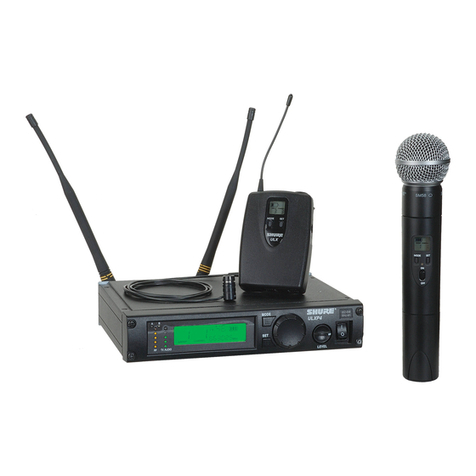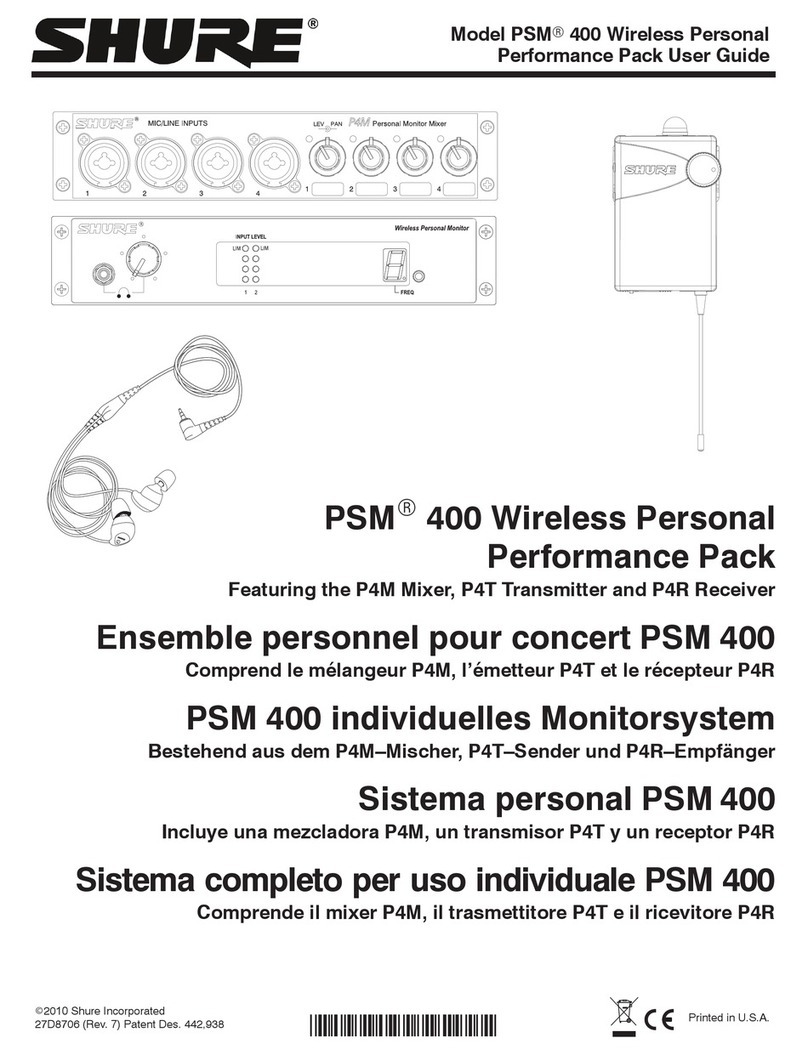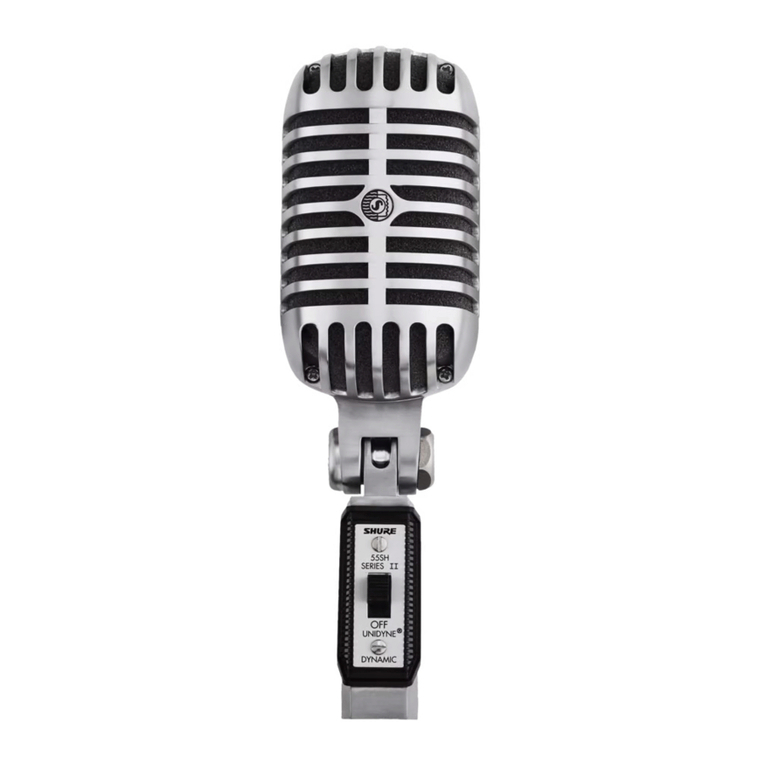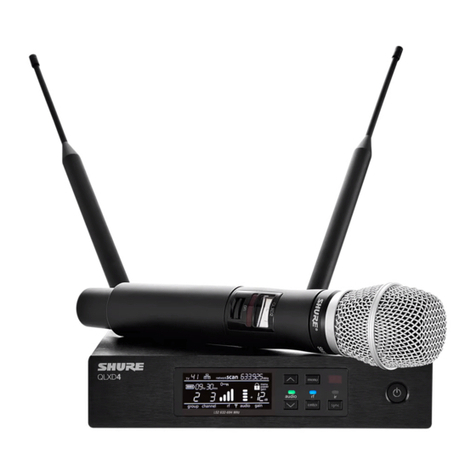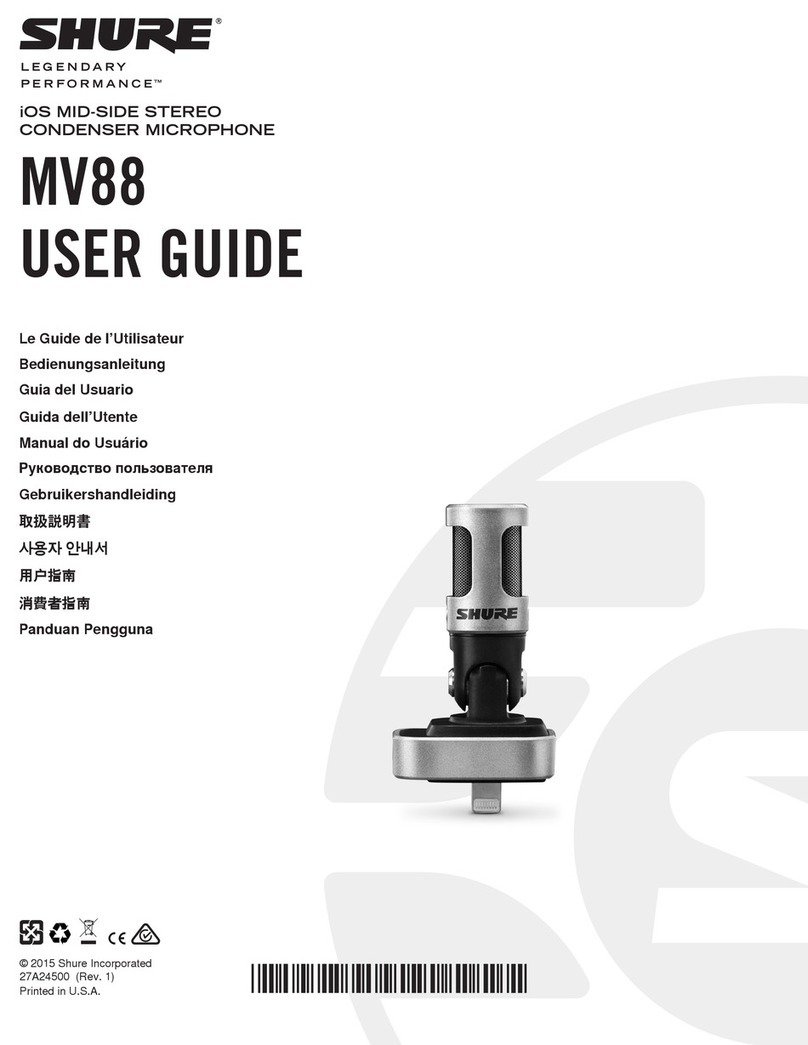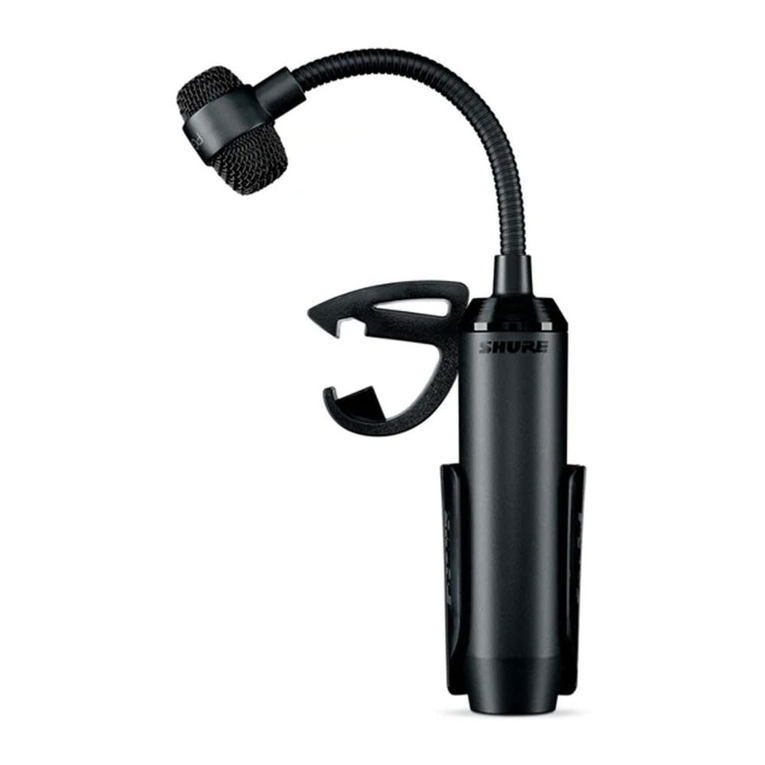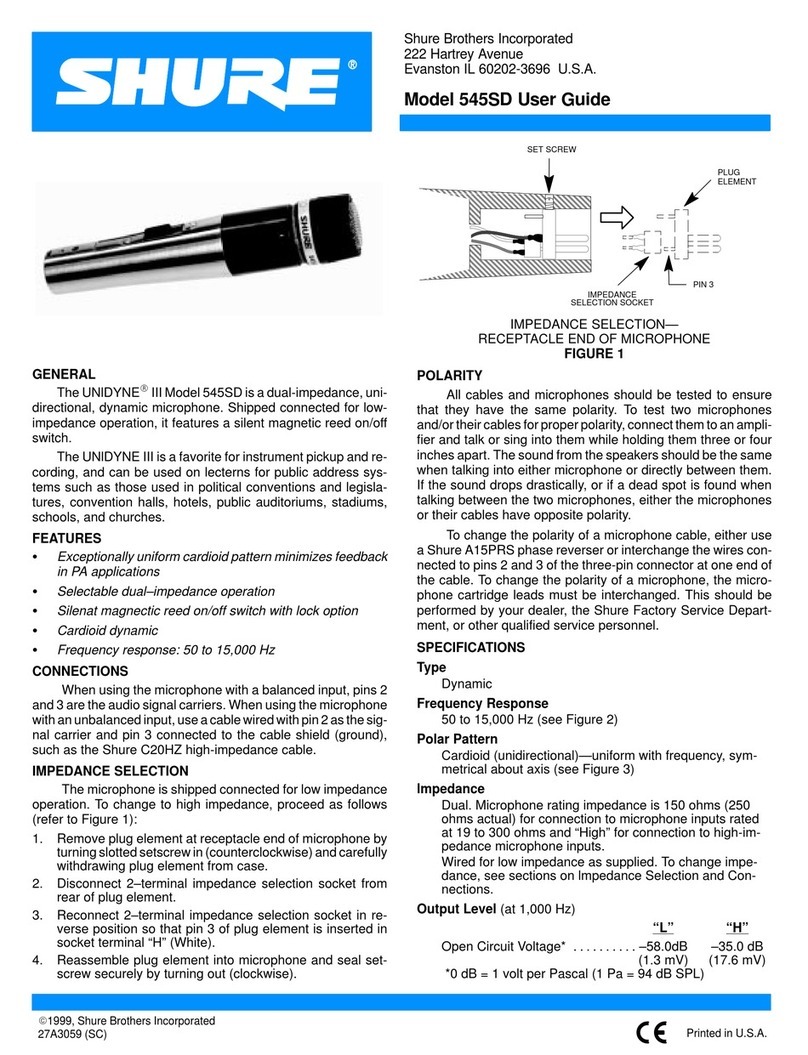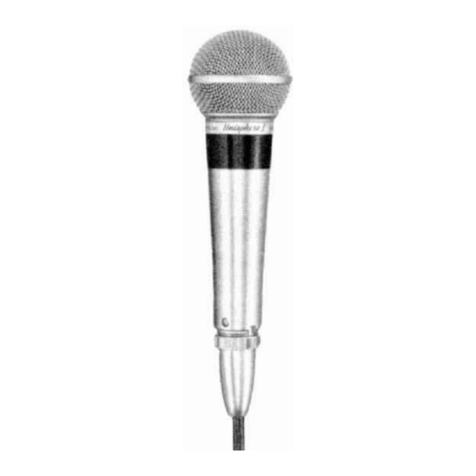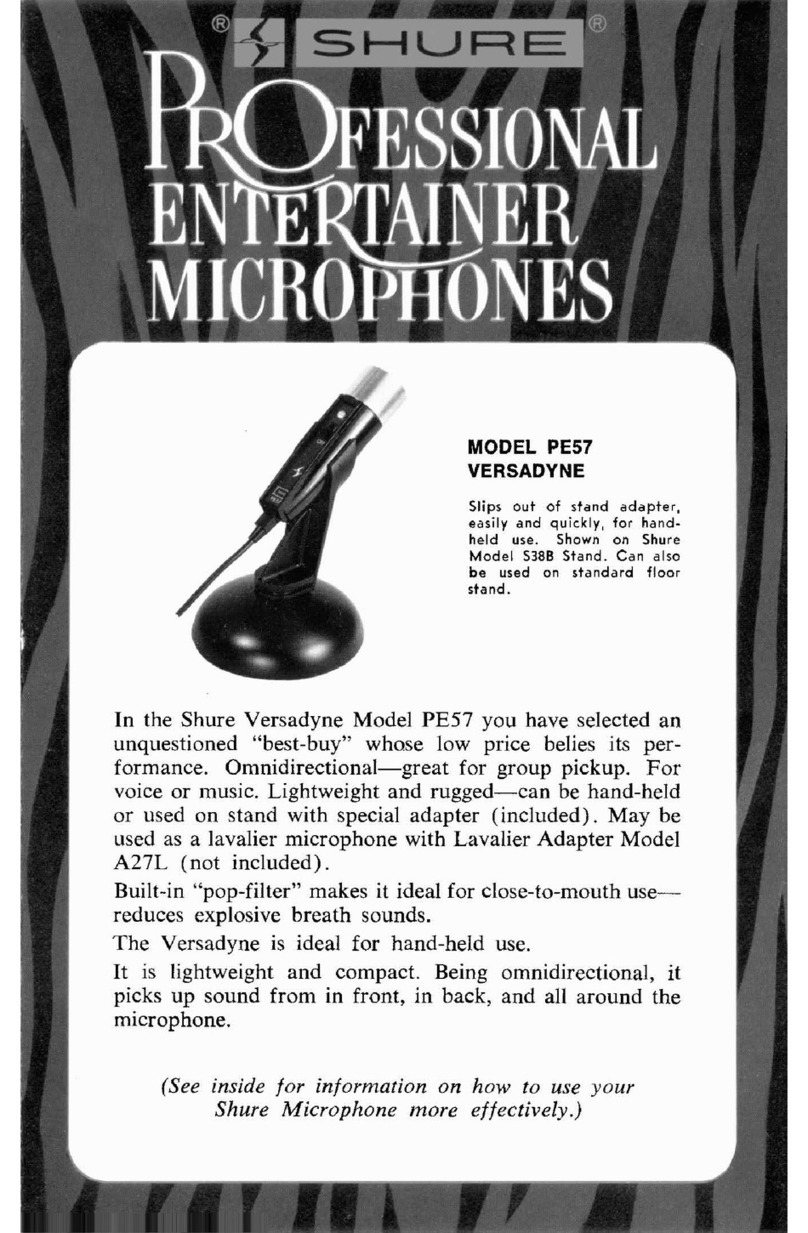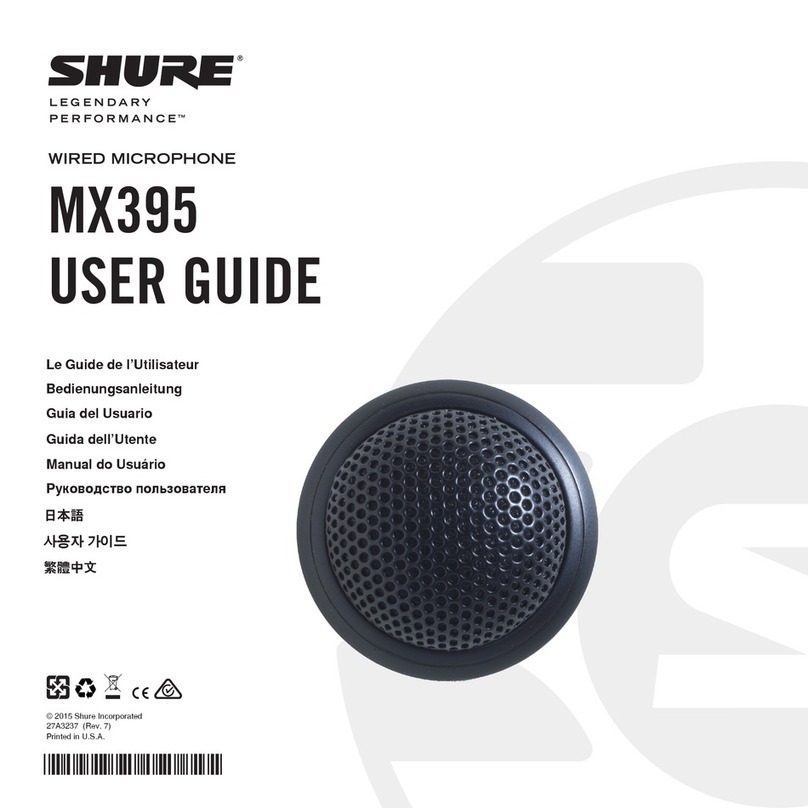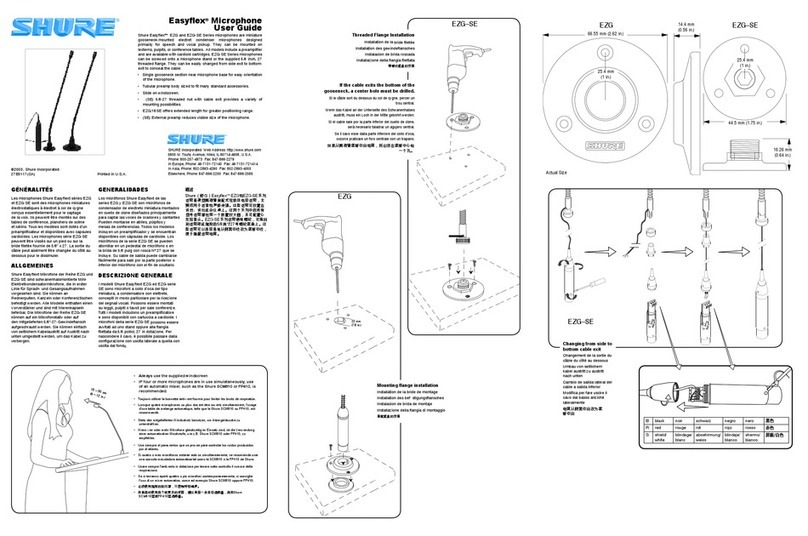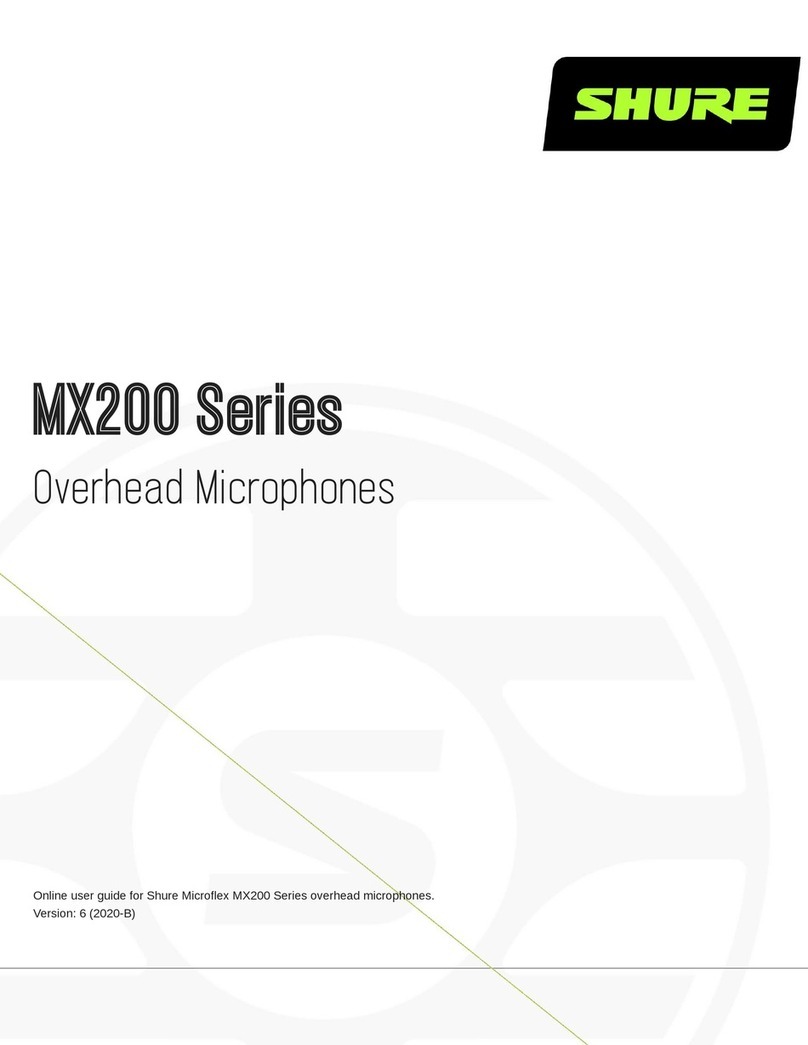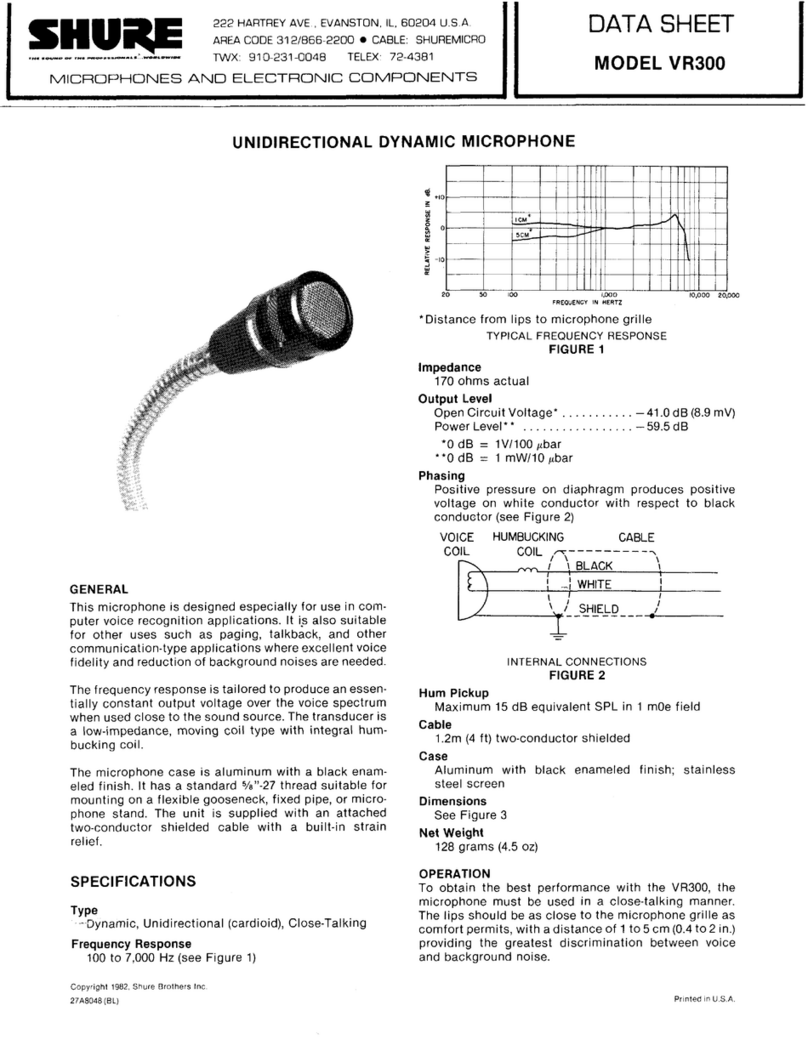
MODEL BETA 58A
SUPERCARDIOID DYNAMIC
VOCAL MICROPHONE
GENERAL
The Shure BETA 58A is a high output supercardioid dy-
namicvocalmicrophonedesignedforprofessional sound re-
inforcement and project studio recording. It maintains a true
supercardioid pattern throughout its frequency range. This
insures high gain before feedback, maximum isolation from
other sound sources, and minimum off–axis tone coloration.
The BETA 58A has a shaped frequency response that is
ideal for close–up vocals. The superb performance of this
microphone is not affected by rough handling because of its
ruggedconstruction,provenshockmountsystem,andhard-
enedsteelmeshgrille.TypicalapplicationsfortheBETA58A
include lead vocals, backup vocals and speech.
FEATURES:
S
Frequency response tailored for vocals, with brightened
midrange and bass rolloff to control proximity effect
S
Uniform supercardioid pattern for high gain before
feedback and superior rejection of off–axis sound
S
Neodymium magnet for high signal–to–noise output
S
Hardened steel mesh grille that resists wear and abuse
S
Advancedpneumaticshockmountsystemthatminimizes
transmission of mechanical noise and vibration
S
Minimally affected by varying load impedance
S
Legendary Shure quality and reliability
APPLICATION AND PLACEMENT
TheBETA58Aisdesignedforclose-upvocals,andcanbe
handheldormountedonastand.Someofthemostcommon
applications and placement techniques are listed in the fol-
lowing table. Keep in mind that microphone technique is
largely a matter of personal taste—there is no one “correct”
microphone position.
SUGGESTED MICROPHONE
PLACEMENT TONE QUALITY
Lips less than 6 inches (15 cm)
away or touching the windscreen,
on axis to microphone.
Robust sound, emphasized
bass, maximum isolation from
other sources.
6 inches to 2 feet (15 to 60 cm)
away from mouth, just above
nose height.
8 inches to 2 feet (20 to 60 cm)
away from mouth, slightly off to
one side.
3 to 6 feet (90 cm to 1.8 m) away.
Natural sound, reduced bass.
Natural sound, reduced bass
and minimal ”s” sounds.
Thinner, distant sound; notice-
able levels of ambient noise.
GENERAL RULES FOR MICROPHONE USE
1. Aimthemicrophonetowardthedesiredsoundsourceand
awayfrom unwanted sources. Sincesupercardioid micro-
phones such as the BETA 58A have narrow pickup pat-
terns and can pick up sounds from the rear, this may not
be obvious or intuitive. Refer to Figure 1.
2. Place the microphone as close as practical to the desired
sound source. Refer to the table above.
3. Work close to the microphone for extra bass response.
4. Use only one microphone to pick up one sound source.
5. Keep the distance between microphones at least three
times the distance from each source to its microphone.
6. Use the fewest number of microphones as is practical.
7. Place microphones as far as possible from reflective sur-
faces.
8. Add a windscreen when using the microphone outdoors.
9. Avoid excessive handling to minimize pickup of mechani-
cal noise and vibration.
10. Do not cover any part of the grille with your hand.
PROXIMITY EFFECT
UnidirectionalmicrophonessuchastheBETA58Aprogres-
sively boost bass frequencies by 6 to 10 dB at 100 Hz when
the microphone is at a distance of about 6 mm (1/4 in.) from
the sound source. This phenomenon, known as proximityef-
fect, can be used to create a warmer, more powerful sound.
To prevent explosive low frequency sound during close–up
use,theBETA58Abassresponsegraduallyrollsoff.Thispro-
vides greater control and helps the user take advantage of
proximity effect.
Shure Brothers Incorporated
222 Hartrey Avenue
Evanston IL 60202-3696 U.S.A.
Model BETA 58AUser Guide
27A2796 (SC)
E1999, Shure Brothers Incorporated Printed in U.S.A.
